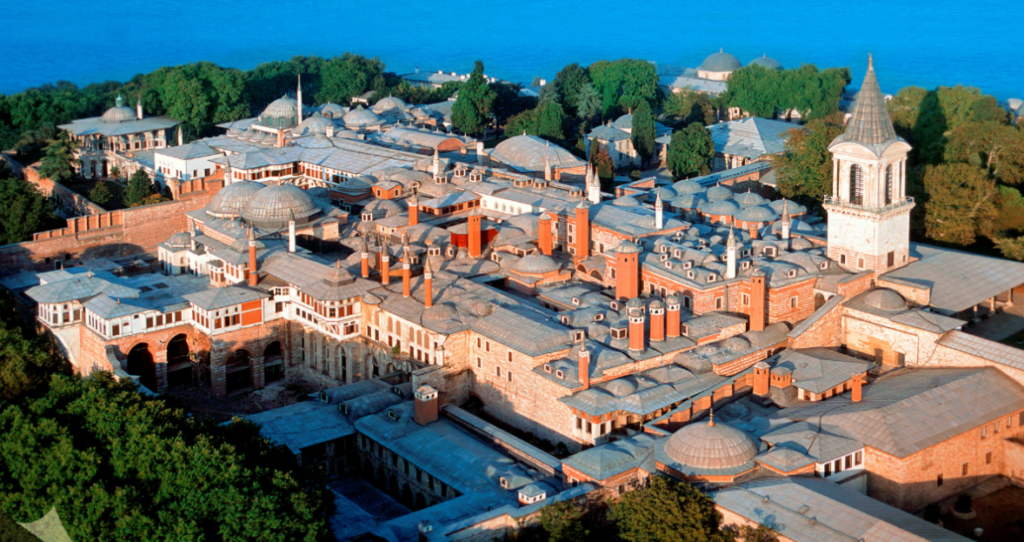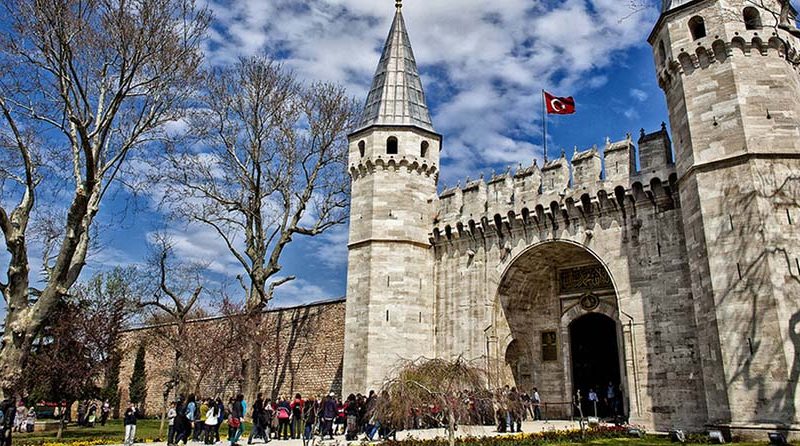Topkapı Palace, once the administrative and residential heart of the Ottoman Empire for over 600 years, now stands as one of Istanbul’s most iconic museums. Built by Sultan Mehmet the Conqueror after the conquest of Constantinople, the palace was originally known as the “New Palace.” Unlike many other royal residences, it is recognized for its modest architecture and close connection to the natural landscape. With more than 50 distinct sections, the palace complex once housed over 4,500 people and served as both a residence and the nerve center of the empire.
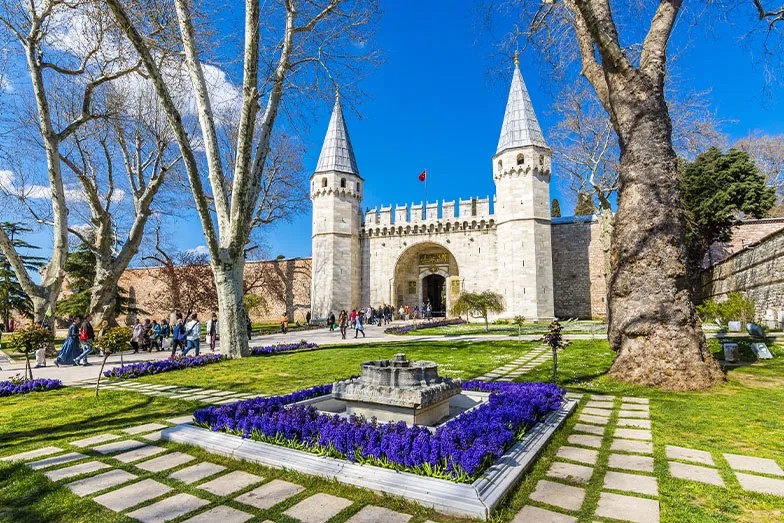
Historical Background and Construction
Following the construction of the Old Palace in Beyazıt, Sultan Mehmet initiated the building of Topkapı Palace in 1460. Completed over 18 years, it gained its current name during the reign of Sultan Mahmud I, after a nearby seafront pavilion known for its cannons –Topkapulu Sarayı- was destroyed by fire.
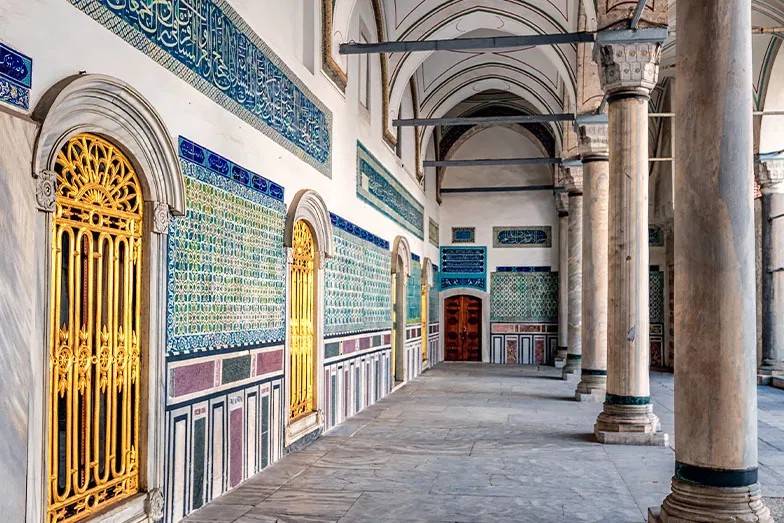
Architectural Features of Topkapı Palace
Topkapı Palace was designed to reflect simplicity and accessibility compared to later Ottoman palaces. Its layout was inspired by a riverside palace in Edirne built by Sultan Murad II. Located on the Sarayburnu Peninsula, the palace sits strategically between the Marmara Sea, the Bosphorus, and the Golden Horn. Covering an area of 700,000 square meters, it is fortified by the 1,400-meter Sur-ı Sultani walls on land and Byzantine walls from the sea.
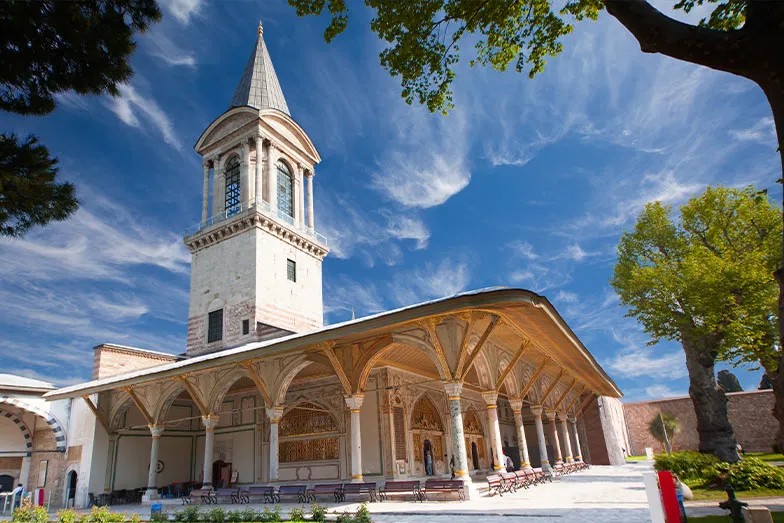
Key areas of the palace include the Enderun (the imperial school), the Audience Chamber, the Library of Sultan Ahmed III, and the Fatih Pavilion. The site also features courtyards that lead to various pavilions and operational structures such as the Chief Physician’s Room, kitchens, and the Imperial Gate.
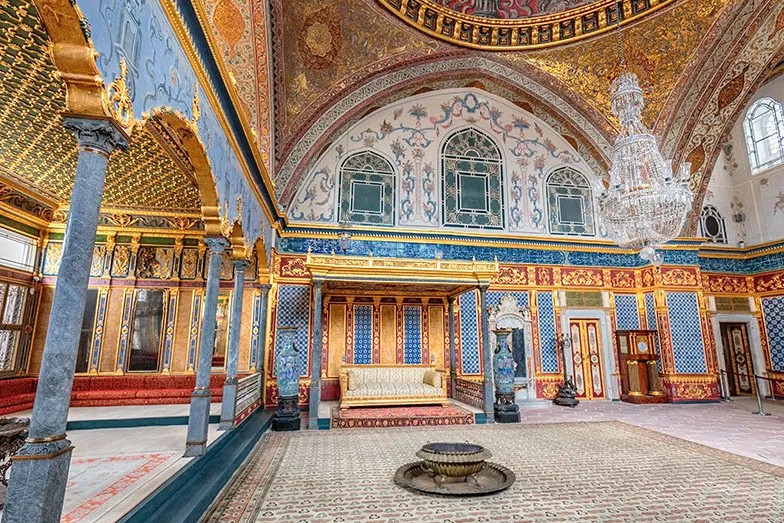
Topkapı Palace Museum Today
Converted into a museum in 1924 by Mustafa Kemal Atatürk, Topkapı Palace showcases an exceptional collection of imperial treasures, Ottoman art, and religious relics. Popular sections include the Harem, the Chamber of Sacred Relics, and the Imperial Treasury, featuring items such as European porcelain, Islamic artifacts, weapons, and sultanic portraits. The museum continues to be a must-visit attraction, especially during Ramadan when interest in sacred Islamic relics surges.
